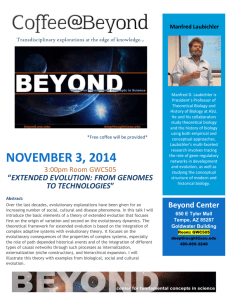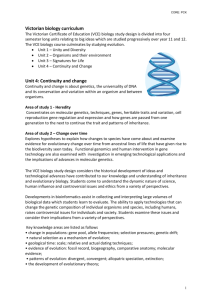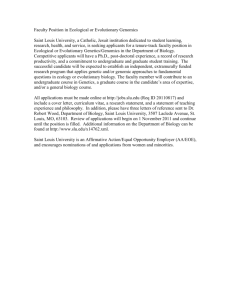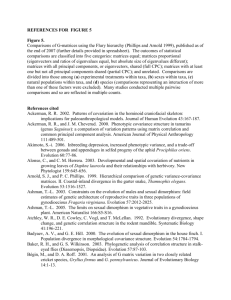Título: Eco-Evo-Devo - do we need a new "Modern Synthesis" in
advertisement
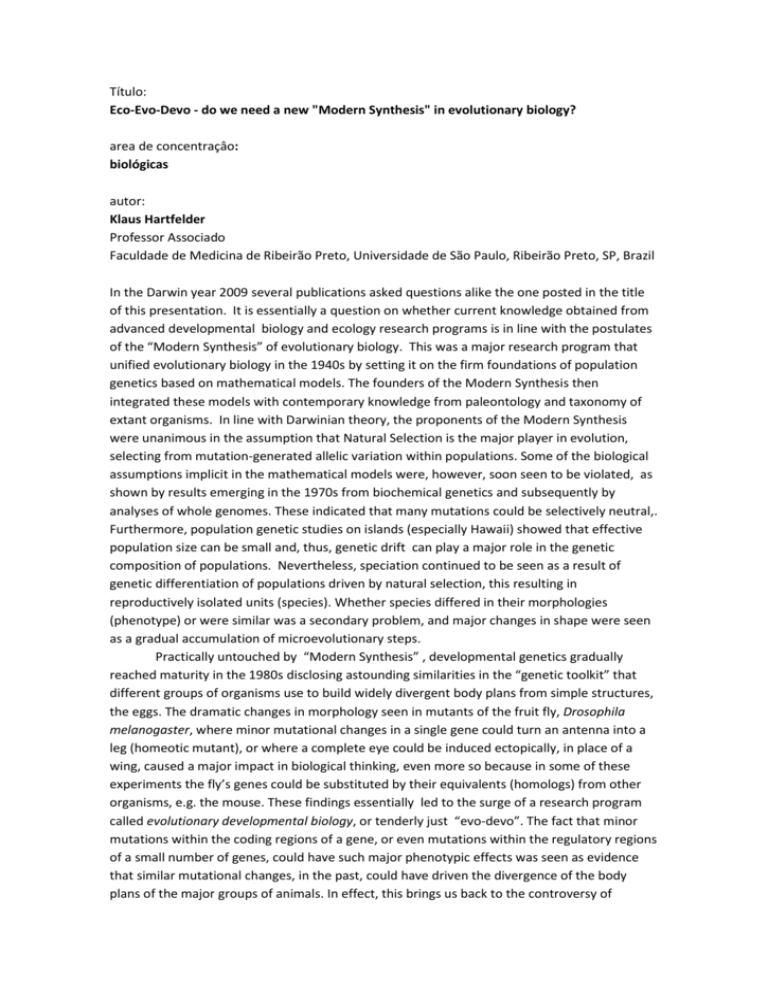
Título: Eco-Evo-Devo - do we need a new "Modern Synthesis" in evolutionary biology? area de concentraçâo: biológicas autor: Klaus Hartfelder Professor Associado Faculdade de Medicina de Ribeirão Preto, Universidade de São Paulo, Ribeirão Preto, SP, Brazil In the Darwin year 2009 several publications asked questions alike the one posted in the title of this presentation. It is essentially a question on whether current knowledge obtained from advanced developmental biology and ecology research programs is in line with the postulates of the “Modern Synthesis” of evolutionary biology. This was a major research program that unified evolutionary biology in the 1940s by setting it on the firm foundations of population genetics based on mathematical models. The founders of the Modern Synthesis then integrated these models with contemporary knowledge from paleontology and taxonomy of extant organisms. In line with Darwinian theory, the proponents of the Modern Synthesis were unanimous in the assumption that Natural Selection is the major player in evolution, selecting from mutation-generated allelic variation within populations. Some of the biological assumptions implicit in the mathematical models were, however, soon seen to be violated, as shown by results emerging in the 1970s from biochemical genetics and subsequently by analyses of whole genomes. These indicated that many mutations could be selectively neutral,. Furthermore, population genetic studies on islands (especially Hawaii) showed that effective population size can be small and, thus, genetic drift can play a major role in the genetic composition of populations. Nevertheless, speciation continued to be seen as a result of genetic differentiation of populations driven by natural selection, this resulting in reproductively isolated units (species). Whether species differed in their morphologies (phenotype) or were similar was a secondary problem, and major changes in shape were seen as a gradual accumulation of microevolutionary steps. Practically untouched by “Modern Synthesis” , developmental genetics gradually reached maturity in the 1980s disclosing astounding similarities in the “genetic toolkit” that different groups of organisms use to build widely divergent body plans from simple structures, the eggs. The dramatic changes in morphology seen in mutants of the fruit fly, Drosophila melanogaster, where minor mutational changes in a single gene could turn an antenna into a leg (homeotic mutant), or where a complete eye could be induced ectopically, in place of a wing, caused a major impact in biological thinking, even more so because in some of these experiments the fly’s genes could be substituted by their equivalents (homologs) from other organisms, e.g. the mouse. These findings essentially led to the surge of a research program called evolutionary developmental biology, or tenderly just “evo-devo”. The fact that minor mutations within the coding regions of a gene, or even mutations within the regulatory regions of a small number of genes, could have such major phenotypic effects was seen as evidence that similar mutational changes, in the past, could have driven the divergence of the body plans of the major groups of animals. In effect, this brings us back to the controversy of microevolution versus macroevolution, never really settled, but , in the 1940s, at least temporarily won by the Modern Synthesis proponents. These results from developmental biology, which showed how major gene effects can dramatically affect the morphology of animal groups, soon caught the attention of ecologists working on major phenotypic variation within species, such as seasonal morphs of butterflies, exaggerated horns of dung beetles, castes of social insects, wing polymorphism in aphids and locusts, and others. In these species, morphological variation can either have a genetic basis, or even be simply driven by environmental parameters, such as temperature, photoperiod, nutrition or population density. This means that environmental effects acting on gene regulatory networks within a single genotype can generate major phenotypic differences within a species and, consequently, there now are strong voices calling for a need for a new research program on unifying principles in evolutionary biology. Tenderly calling this new field “eco-evo-devo” would, however, not be of much use if its three legs continued to march merely in parallel. Clearly, I would be overestimating my insights and sound foolish if promising to provide unifying principles at this workshop, but reviewing the essentials of the Modern Synthesis and, especially trying to grasp as to what is the meaning of micro- and macroevolution in terms of functional genomics in a population context may be a step towards this goal.

